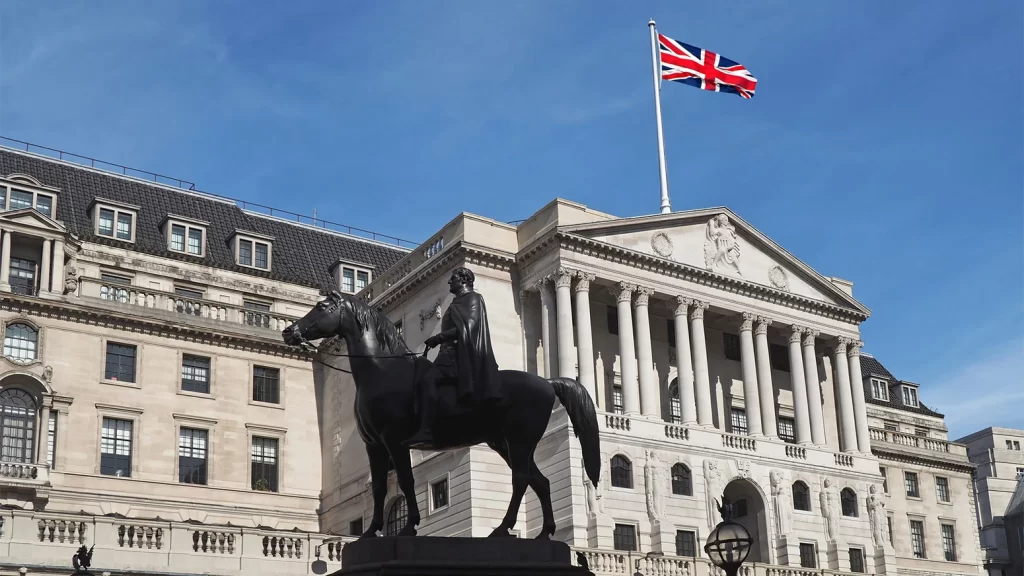
The Bank of England is widely expected to reduce interest rates in its upcoming decision on Thursday, a move that will be closely scrutinized by businesses, borrowers, and savers alike. Analysts predict that the Bank’s benchmark interest rate will fall from its current level of 5% to 4.75%, marking a notable shift in monetary policy. This potential rate cut is seen as a response to a variety of economic indicators, including declining inflation and slowing wage growth, though its effects will be felt differently across the economy.
Impact on Borrowers and Savers
The primary consequence of a rate cut is that borrowing becomes cheaper. A reduction in the Bank’s base rate typically leads to lower borrowing costs for consumers and businesses. For those with mortgages, especially those on tracker or variable-rate deals, a rate cut would likely result in an immediate drop in monthly repayments. Currently, mortgage rates are still relatively high, with the average two-year fixed-rate mortgage standing at 5.4% and a five-year deal at 5.11%, according to financial information provider Moneyfacts. Despite these high rates, more than one million borrowers on variable-rate mortgages could see relief in the form of reduced payments.
However, while borrowers may benefit, savers are likely to feel the sting of a rate cut. Interest rates on savings accounts would likely decrease, meaning the returns on easy-access accounts, which currently average around 3%, would drop. Rachel Springall, a financial expert at Moneyfacts, noted that savers relying on interest to supplement their income would be particularly hard-hit, as a rate reduction would make it harder for them to generate returns from their savings. For those who have invested in savings accounts for the long term, the lower interest rates may leave them feeling as though their efforts to save are being overlooked.
Why the Cut is Expected
The potential rate cut comes in the wake of several key economic indicators. In August, the Bank of England reduced its interest rate from 5.25% to 5%, marking the first cut in over four years after a series of rate hikes aimed at curbing inflation. Recent data revealed that the UK inflation rate unexpectedly dropped to 1.7% in September, the lowest level in three-and-a-half years, and well below the government’s 2% target. At the same time, official figures showed that wage growth slowed significantly, reaching its lowest pace in more than two years. These developments have increased the likelihood of further rate cuts.
Bank Governor Andrew Bailey has also suggested that the Bank could act more aggressively in reducing rates, depending on how inflation evolves. He pointed out that with inflation under control, there may be more room to stimulate the economy through lower borrowing costs. The key issue will be how the Bank balances its goal of controlling inflation with its desire to support economic growth through cheaper borrowing.
Broader Economic Context: Budget and US Election
Several factors beyond UK domestic data are influencing the Bank of England’s decision-making process. The UK government’s recent Budget, delivered by Chancellor Rachel Reeves, included measures that could potentially drive inflation and interest rates higher in the short term. This has added an element of uncertainty about whether further rate cuts will occur in December, as expected by some analysts.
Globally, the economic situation is also shifting. The outcome of the U.S. presidential election, with Donald Trump securing a second term, has raised concerns about potential tariff increases, particularly on imports. These tariffs could push inflation higher in the U.S., which would limit the Federal Reserve’s ability to lower interest rates in the near future. The ripple effect of U.S. policy changes could influence decisions made by central banks worldwide, including the Bank of England.
What Are the Best Savings Options?
For savers, it is important to be proactive in seeking out the best deals available, especially as interest rates shift. Financial experts suggest that loyalty to a single provider may not always offer the best returns, as older savings accounts tend to have lower interest rates. Shopping around for savings accounts, whether with high street banks or smaller financial institutions, can help maximize returns.
The best savings account for you will depend on your personal financial situation. For example, locking your money into a longer-term savings product might offer a higher interest rate, but it may not suit everyone’s lifestyle, especially those who need quick access to their funds. Charities and financial advisors recommend maintaining some savings, even in tight financial times, to help cover unexpected costs.
For guidance on different savings options, the government-backed MoneyHelper website offers a comprehensive guide to understanding savings accounts, including what to consider before committing to a particular product. Whether you’re seeking long-term growth or just a place to park short-term funds, it’s worth exploring the various accounts available to find the best fit for your needs.
Conclusion
As the Bank of England prepares to announce its decision on interest rates, the impact of a potential rate cut will be felt across the UK economy. Borrowers stand to benefit from cheaper borrowing costs, while savers may see lower returns on their deposits. The move comes amid shifting economic conditions, including lower inflation and slower wage growth, but it is also influenced by broader global factors such as political developments in the U.S. With the economic outlook still uncertain, both borrowers and savers will need to stay alert to future rate changes and adjust their strategies accordingly.








